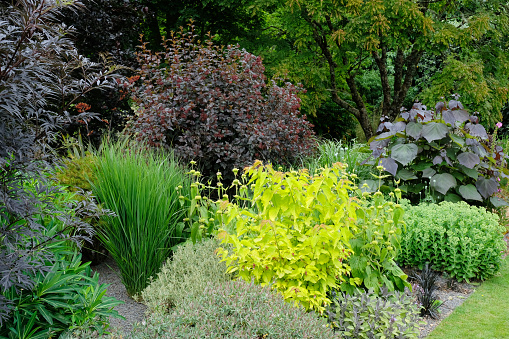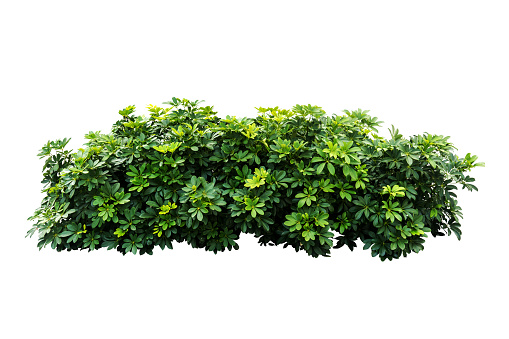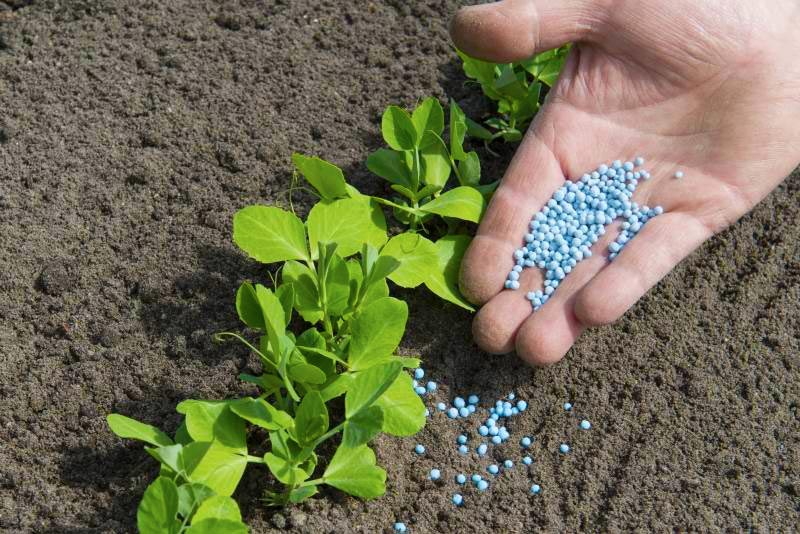Shrubs and perennials are a common sight in gardens all over the UK, especially perennials which are favoured for their ability to be grown in small areas, and the variety of colours and textures on offer. It is not hard to craft an incredible looking garden using only shrubs and perennials, all it needs is a little imagination and proper planning. However, keeping your plants looking their best, year after year does require that you know how and when to feed them.
This guide will show you when to fertilise perennials and shrubs, and also offer a few tips here and there for good measure. Let’s get cracking.
When to fertilise shrubs
Getting the most out of your shrubs requires a little knowledge about the correct dosage of fertiliser, and also the right times to apply it. Getting it wrong will probably not harm your plants too much, but it will stop you from seeing the true potential of the shrub. On the other hand, knowing just when to fertilise them will lead to beautifully flowering shrubs that you can be proud of.

What type of fertiliser should I use on my shrubs?
Ideally, you want a slow releasing type of 10-10-10 fertiliser for your shrubs that will provide a steady supply of nutrients. I personally like organic fertilisers for this task, but it’s not the only way to go about it.
Are all shrubs fed the same way?
the answer to this is no. Some non-flowering shrubs get along perfectly fine without you needing to feed them with fertiliser, while others need more than their fair share. As a rule, mature shrubs usually don’t require as much fertiliser as younger ones either.
Are there any times of the year when I should avoid fertilising my shrubs?
It may surprise you to learn that one of the worst times to fertilise your shrubs is in summer, late summer to be exact. The reason for this is that feeding fertiliser to your shrubs encourages growth, we all know that right? But what many people fail to consider, is that the newly grown parts of the shrub will have to deal with the harsh cold of the British winter, and in many cases, they don’t see it through until Spring. June is the latest you want to be fertilising rose shrubs, just to be on the safe side.
When is the best time to fertilise shrubs?
In my opinion, the best time to fertilise your shrubs to promote growth is in early to mid-Spring, but you’ll have to keep an eye on the weather for a dry patch. fertilising shrubs with slow release products at this time will provide the new shoots that come in late Spring and Summer all the nutrients they need.
If you’ve planted flowering shrubs, a second, lighter, feeding in early Autumn can work wonders when it comes to new growth. Non-flowering types might only need a single feed at this time and you can skip fertilising them in Spring, but it depends on the particular shrub.
When to fertilise perennials
Correct fertilising of perennials isn’t that much different to what we advised for shrubs above, but you have to be careful not to over-fertilise perennials or they could be past their best before the season is over.

Like with everything when it comes to gardening, there are a lot of variables involved though, and there is no one true method to suit all. For example, the type of soil that the perennials are planted in could require them to be fertilised more or less often.
What type of fertile is best for perennials?
Again, a slow release fertiliser is the best thing to use on perennials. A good, balanced fertiliser with a 20-5-10 mix usually works well with all kinds of these plants. Blood fish and bone fertilisers are also good.
Are there any times of the year when I should avoid fertilising my perennials?
For the same reasons as we mentioned with shrubs, fertilising in summer should be avoided. New growth spurred by feeding at this time just won’t have time to harden off before the dropping winter temperatures arrive.
When is the best time to fertilise perennials?
To get the best results from fertilising your perennials, you should weed and aerate the soil in mid-march, and then lay down some manure or well-rotted compost. A layer about an inch or so thick will do wonders for your perennials and keep the moisture where it needs to be as the temperatures rise.
Then about two months later, in early May, apply your fertiliser on the soil, evenly, being sure not to overdo it. Following the instructions on your fertiliser product is fine, and even using a bit less could be better, especially if you plan on giving your perennials a mid-season extra feed. If you are going to feed them again, you should do so no later than mid-June for the reasons we’ve already spelled out earlier.
Other advice for keeping your perennials healthy
Most perennials like to be watered quite regularly, especially if it is a hot and dry summer. Plants in their first year need particular care when it comes to keeping them with enough water, but be careful no to waterlog the soil.
Test the soil with your bare hands, and if it feels a little too soggy, you need to lay off the watering for a little while. Perfect soil for perennials will be nice and moist but not overly so. It might be a good idea to get some products to keep the snails and slugs at bay (please take a look in our article Best slug pellets and repellants), as they can become a problem with perennials. If you’re not into using chemicals, you can try natural concoctions like garlic and water, or cold coffee and spraying it on and around your plants.
That’s all from us for today folks. As you can see, there isn’t that much to consider when fertilising shrubs and perennials. You just have to be careful of the timing, and also of the dosage you use. Err on the side of caution and use a little less than the instructions say, especially if you are doing a mid-season feed, or giving shrubs a second feed in Autumn.
